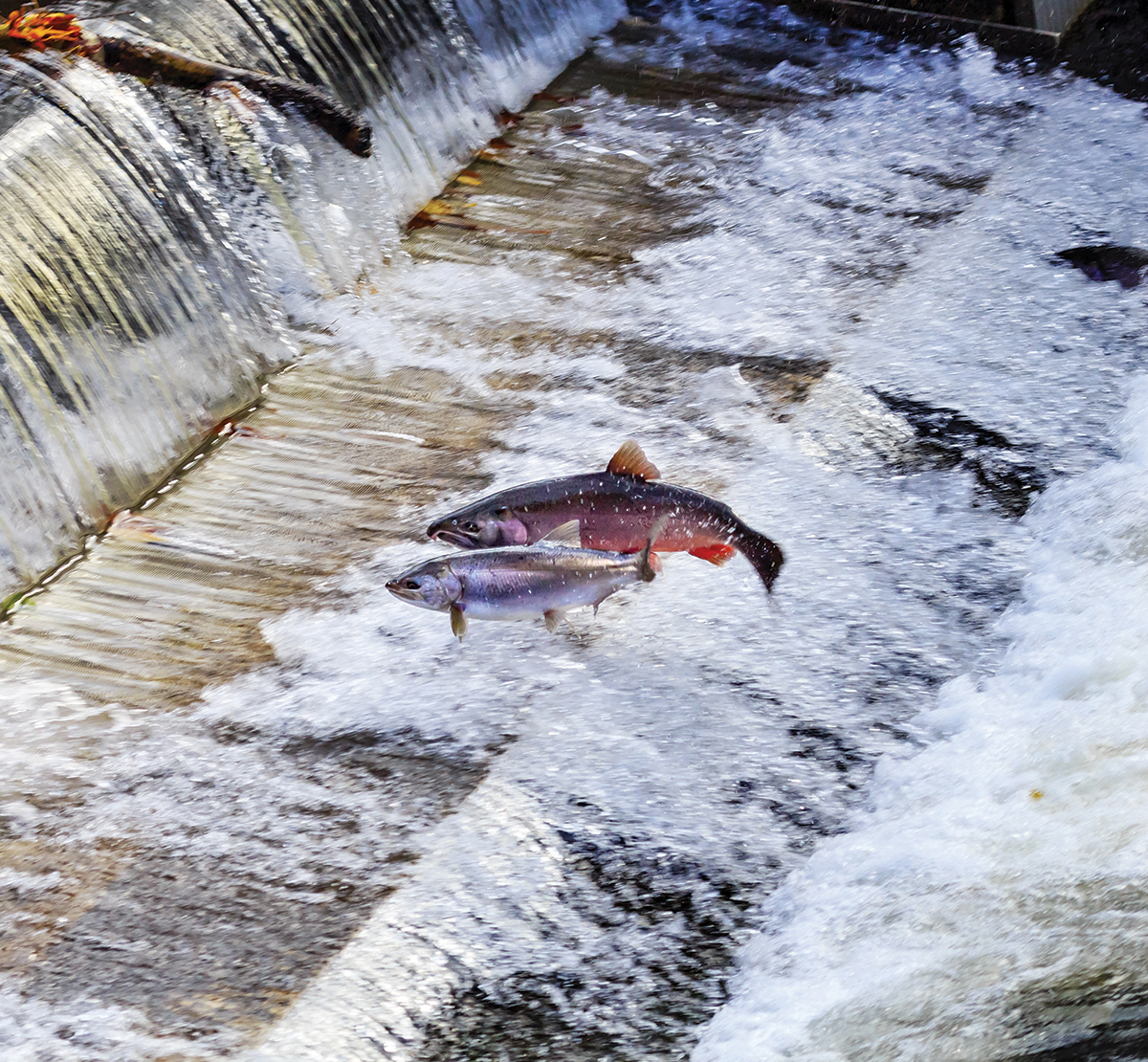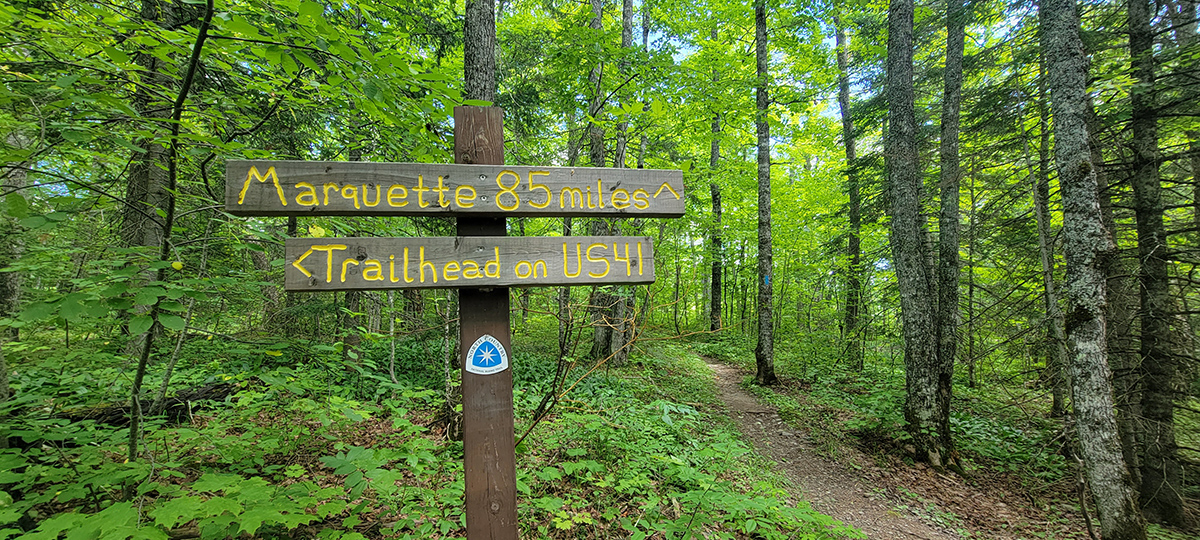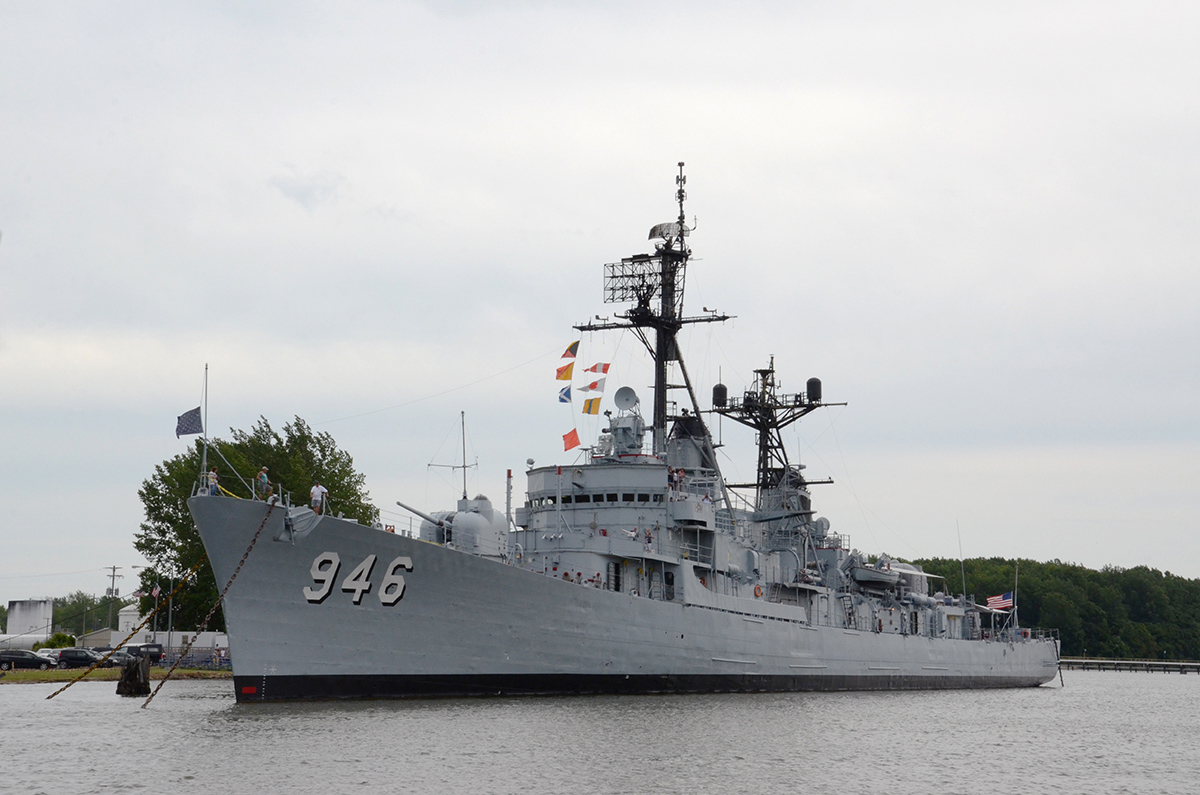WRITER | MATT DAVIDSON
The state of Michigan is blessed with many natural resources, from thickly forested state and national parks to countless lakes and rivers. Within our waters, there are many species of fish, some of which reproduce and thrive without human intervention. But there are others that need assistance from the Department of Natural Resources state fish hatcheries to raise from egg stage until ready to be released into the wild.
Thanks to the efforts of our state fish hatchery employees, Michigan is one of the premier locations for species such as Chinook and coho salmon. Walleye fishing on both inland lakes and the Great Lakes is phenomenal, and many of the streams, rivers, and lakes across the state teem with multiple species of trout. The science and hard work behind this bounty is often overlooked and unknown to many, which is why our state fish hatcheries have tours running year-round so the public can experience firsthand what goes into keeping our fish population healthy and diverse.
Paul Stowe, hatchery biologist at the Platte River State Fish Hatchery in Beulah, said, “Here at this hatchery, we raise coho, Chinook, and Atlantic salmon as well as walleye for the Great Lakes and inland waters. The Platte River Weir is the primary egg-take facility for coho salmon in the Upper Great Lakes region; the Platte has a tremendous run of spawning coho each fall.”
Salmon were introduced to Michigan waters in the late 1800s, but a truly successful population wasn’t established until 1966, when biologists were able to capitalize on hard-earned knowledge from the previous century. Salmon, which are introduced to rivers as juvenile fish known as smolt, migrate to the big water to feed and mature after spending the first period of their lives in their home river system. While young, they imprint upon their river, which will cause them to migrate back once they reach sexual maturity and are ready to spawn.
“Spawning usually occurs in late September or early October,” said Stowe. “During this time we harvest upwards of 3 million eggs from our weir on the Platte, of which 1.5 million will eventually reach smolt size. We typically take twice the number of eggs as fish we intend to plant. It’s one of the most exciting times for people to visit, as the river is thick with fish and the hatchery has all of the different stages of life present for people to see.”
Shana Ramsey is hatchery interpreter at the Wolf Lake State Fish Hatchery in Mattawan, which raises steelhead, Chinook salmon, walleye, and Great Lakes muskellunge that are stocked across the state. She speaks enthusiastically of the things people can see at their hatchery.
“Here at the Wolf Lake Hatchery, we always have something going on for visitors to learn and experience what it is we do. People are welcome to come and take self-guided tours of our facility daily, and we also offer guided tours for large groups if arranged in advance.”
Ramsey added, “One of the main draws is our half-acre show pond that contains Chinook, steelhead, muskie, and lake sturgeon. Two of the sturgeon are an impressive six feet in length. We feed the fish a diet of nutrition-packed pellets daily, which is the perfect time to see them in feeding frenzy mode.”
Ramsey also provided impressive numbers on the fish that are stocked yearly. “Last year we released 440,000 Chinook fingerlings and over 700,000 steelhead yearlings. The walleye and Great Lakes muskellunge numbers were huge as well.”
John Jackoviak, hatchery manager at the Harietta State Fish Hatchery, said that his hatchery raises brown and rainbow trout for release in both inland waters and the Great Lakes. “We released 800,000 brown trout and 300,000 rainbow trout last year; our fish are mainly released south of M-55 at 325 different sites.” All of the eggs they raise come from the Oden State Fish Hatchery in Alanson, where they are produced by captive trout that live onsite.
To get an idea of the size some of these fish are capable of attaining, I asked him about the old world record brown trout that was caught in Manistee a few years ago. He laughed as he explained, “It was 42 pounds, and reached that weight in probably six or seven years. We plant many fish in the Manistee, so it’s a pretty fair bet that it came from our hatchery.”
There are many other hatcheries spread across the state:
The Marquette State Fish Hatchery is located right by the shores of Lake Superior and the primary broodstock and rearing facility for brook and lake trout in Michigan. It also produces splake, which are a sterile hybrid of the two.
The Oden State Fish Hatchery is the primary broodstock facility for brown and rainbow trout. It was rebuilt in 2002 and is now one of the most technologically advanced hatcheries of its kind.
The Thompson State Fish Hatchery in Manistique has been operating since 1922, producing Chinook, steelhead, and walleye for release across the state.
One thing hatchery employees have in common is their love for showing members of the public around their respective facilities and introducing newcomers to the process.
Ramsey said, “One of my favorite things is when we get a tour group of kids from one of the larger cities who may never have had the opportunity to see a salmon or steelhead. When they get to watch them being fed and the sturgeon make an appearance, you can see the delight in their eyes.”








